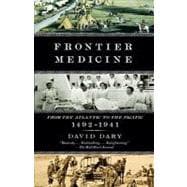
What is included with this book?
| Preface vii | |
| Indian Medicine | p. 3 |
| Early American Medicine | p. 28 |
| Over the Appalachians | p. 51 |
| Beyond the Mississippi | p. 78 |
| Fur Traders and Trappers | p. 95 |
| On the Oregon Trail | p. 116 |
| Among the Soldiers | p. 136 |
| On Homestead and Ranch | p. 163 |
| In Western Towns | p. 187 |
| Going West for Your Health | p. 211 |
| Midwives and Women Doctors | p. 226 |
| Patent Medicines | p. 244 |
| Quacks | p. 273 |
| Into the Twentieth Century | p. 303 |
| Glossary | p. 323 |
| Appendix: Epidemics in North America, 1616-1950 | p. 333 |
| Notes | p. 335 |
| Bibliography | p. 349 |
| Acknowledgements | p. 363 |
| Index | p. 365 |
| Table of Contents provided by Ingram. All Rights Reserved. |
The New copy of this book will include any supplemental materials advertised. Please check the title of the book to determine if it should include any access cards, study guides, lab manuals, CDs, etc.
The Used, Rental and eBook copies of this book are not guaranteed to include any supplemental materials. Typically, only the book itself is included. This is true even if the title states it includes any access cards, study guides, lab manuals, CDs, etc.
Excerpted from Frontier Medicine: From the ATlantic to the Pacific, 1492-1941 by David Dary
All rights reserved by the original copyright owners. Excerpts are provided for display purposes only and may not be reproduced, reprinted or distributed without the written permission of the publisher.